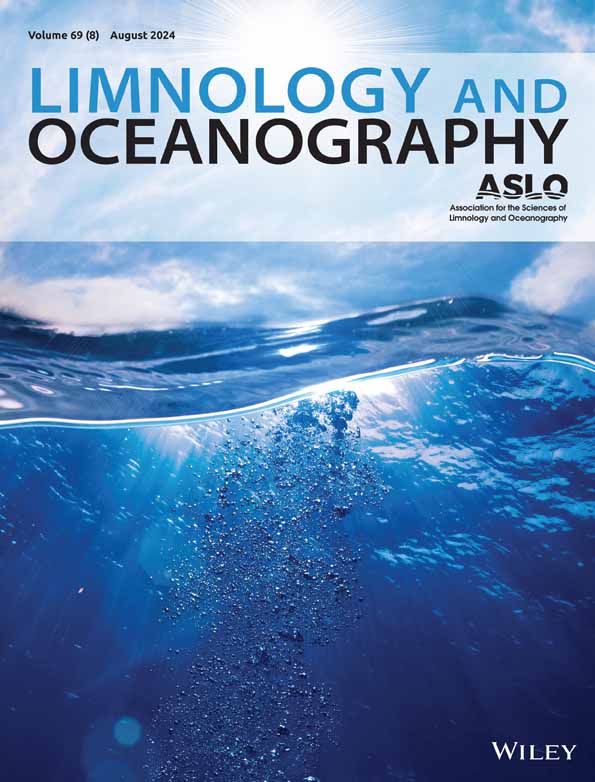Light and temperature as triggers for surface filamentous green algal blooms in shallow freshwater systems
IF 3.7
1区 地球科学
Q1 LIMNOLOGY
引用次数: 0
Abstract
Blooms of filamentous green algae (FGA) form dense mats at the surface of shallow freshwaters and have multiple negative impacts on aquatic ecosystem functions, services, and aesthetics. Although nutrient enrichment in freshwaters is a primary driver of excessive FGA growth, much less is known about other abiotic factors controlling bloom growth rate, extent, and timing. We performed a series of indoor mesocosm (Limnotron) experiments to investigate the effects of photosynthetically active radiation irradiance, photoperiod, and water temperature on the growth and surface bloom formation of FGA using underwater and surface photography. The results revealed that a minimum daily light integral of ~ 13.2 mol m光和温度作为浅层淡水系统中表层丝状绿藻华的触发因素
丝状绿藻(FGA)的大量繁殖在浅水淡水表面形成了密集的席子,并对水生生态系统的功能、服务和美学产生了多重负面影响。尽管淡水中营养物质的富集是FGA过度生长的主要驱动因素,但人们对控制华花生长速度、程度和时间的其他非生物因素知之甚少。为了研究光合有效辐射辐照度、光周期和水温对FGA生长和表面华花形成的影响,采用水下和水面摄影技术进行了一系列室内中环境(Limnotron)实验。结果表明,水华的形成和FGA的大量生长需要最小的日光积分~ 13.2 mol m−2 d−1(在水面测量的光合有效辐射辐照度和日长的组合)。在较短的日长(即8小时)时,水面华不会发生,而较长的日长(即16小时)则允许更多的时间使光合作用产生的气泡在FGA质量中积累,使它们通过浮力上升到水面。我们还发现,温度在16°C到22°C之间是FGA形成表面华花的最佳温度。随着淡水生态系统受到气候变化的影响越来越大,我们的研究揭示了影响地表水华发生的因素,并有助于确定未来水体何时可能面临FGA水华的风险。
本文章由计算机程序翻译,如有差异,请以英文原文为准。
求助全文
约1分钟内获得全文
求助全文
来源期刊

Limnology and Oceanography
地学-海洋学
CiteScore
8.80
自引率
6.70%
发文量
254
审稿时长
3 months
期刊介绍:
Limnology and Oceanography (L&O; print ISSN 0024-3590, online ISSN 1939-5590) publishes original articles, including scholarly reviews, about all aspects of limnology and oceanography. The journal''s unifying theme is the understanding of aquatic systems. Submissions are judged on the originality of their data, interpretations, and ideas, and on the degree to which they can be generalized beyond the particular aquatic system examined. Laboratory and modeling studies must demonstrate relevance to field environments; typically this means that they are bolstered by substantial "real-world" data. Few purely theoretical or purely empirical papers are accepted for review.
 求助内容:
求助内容: 应助结果提醒方式:
应助结果提醒方式:


